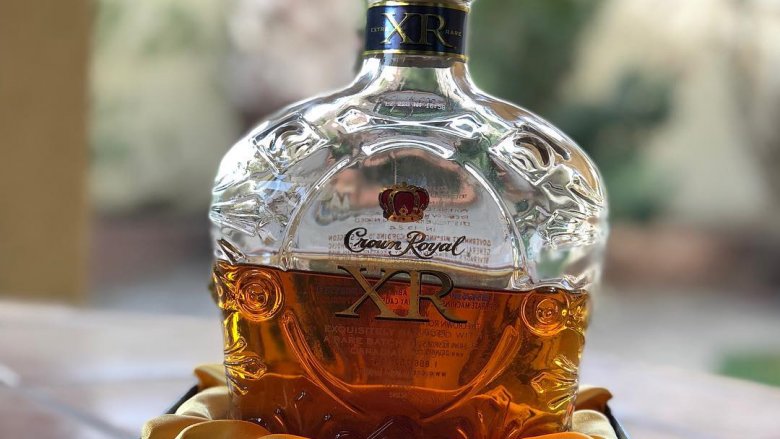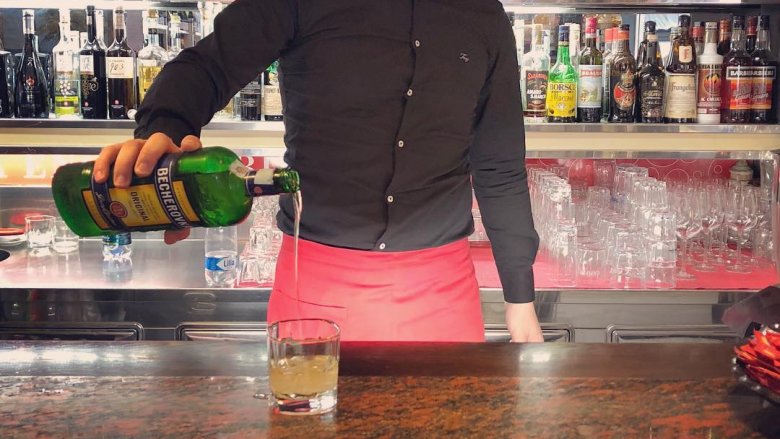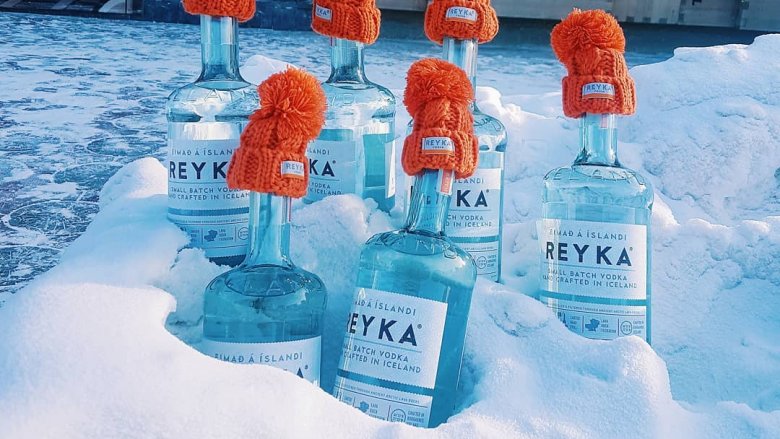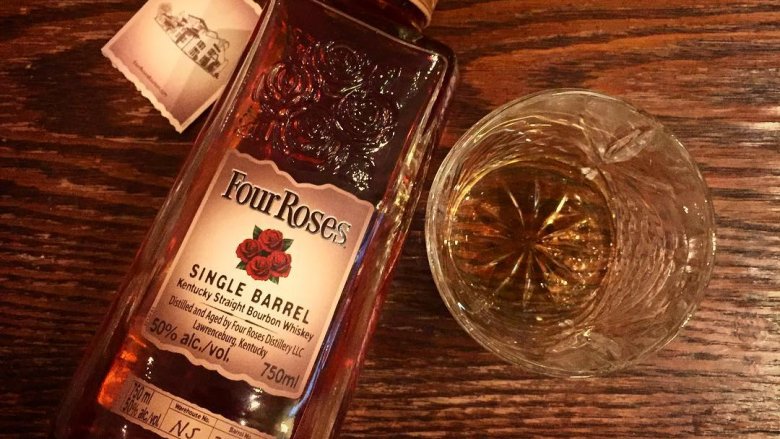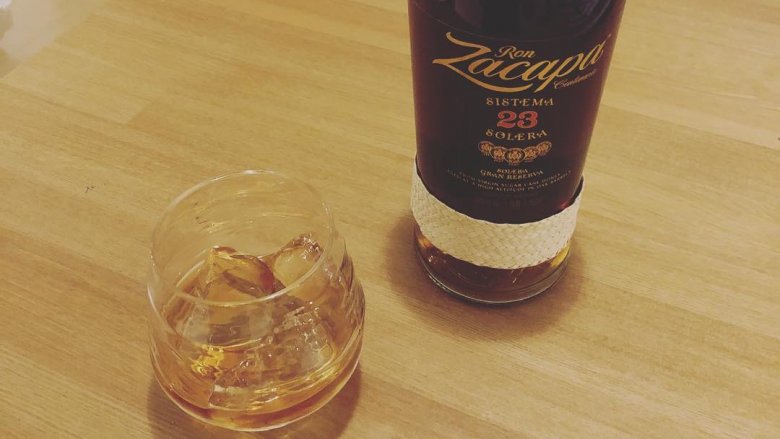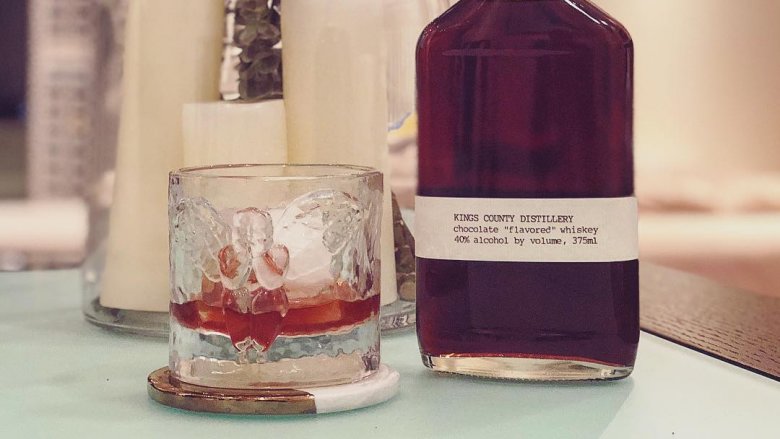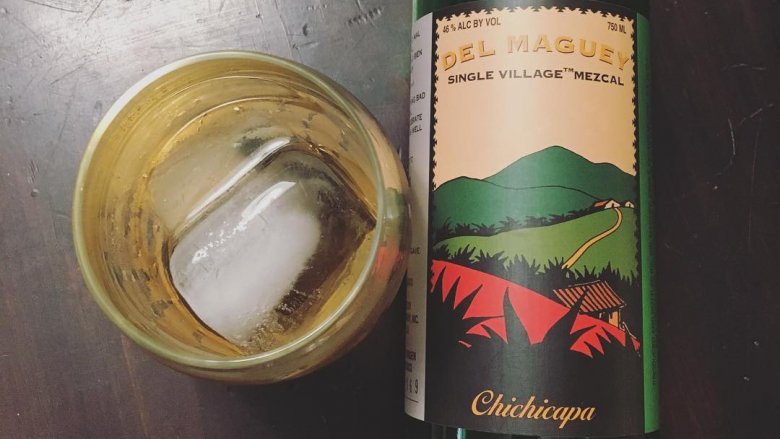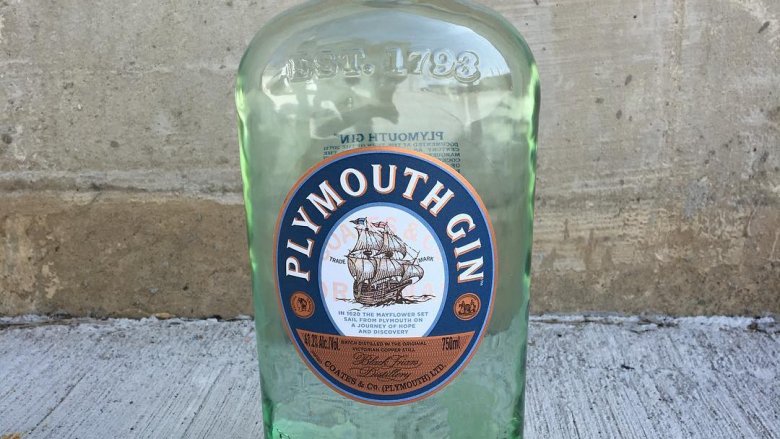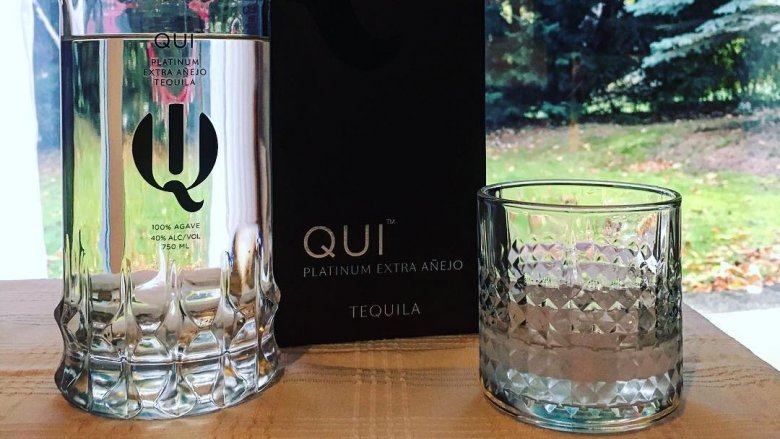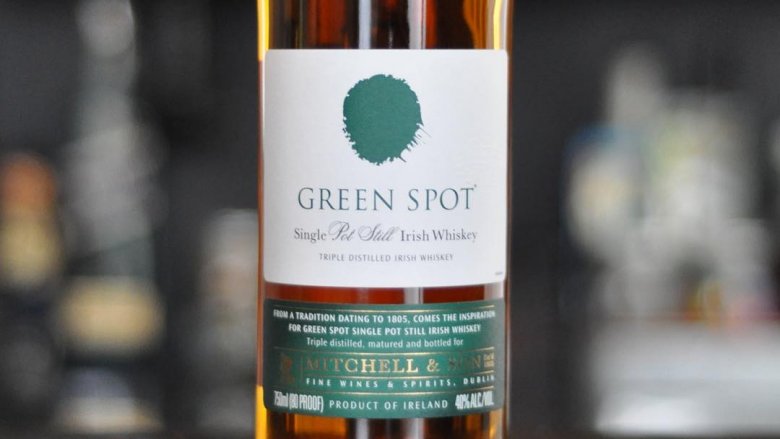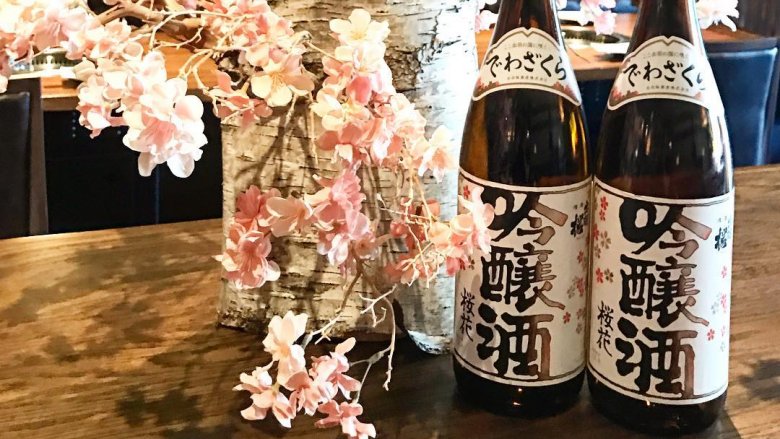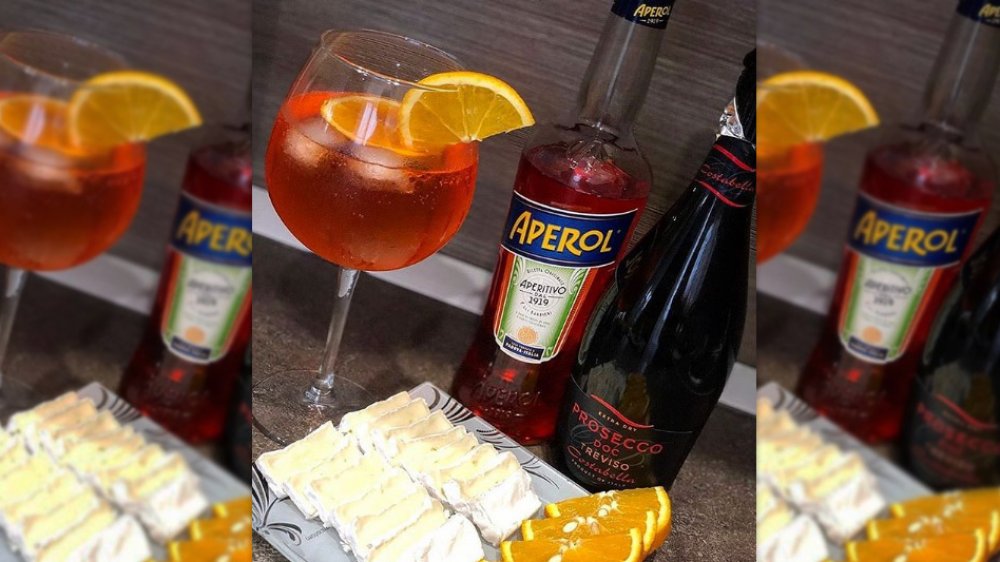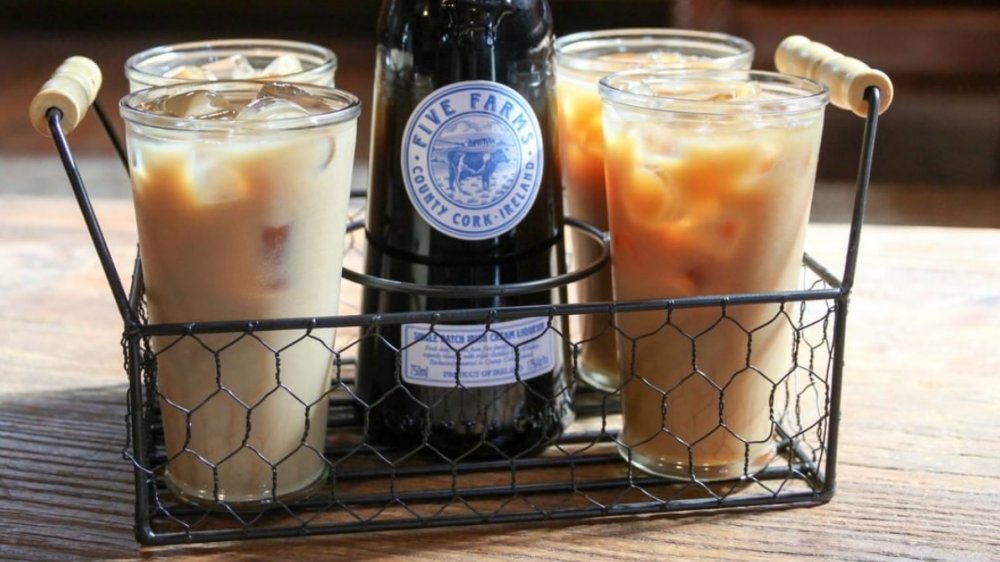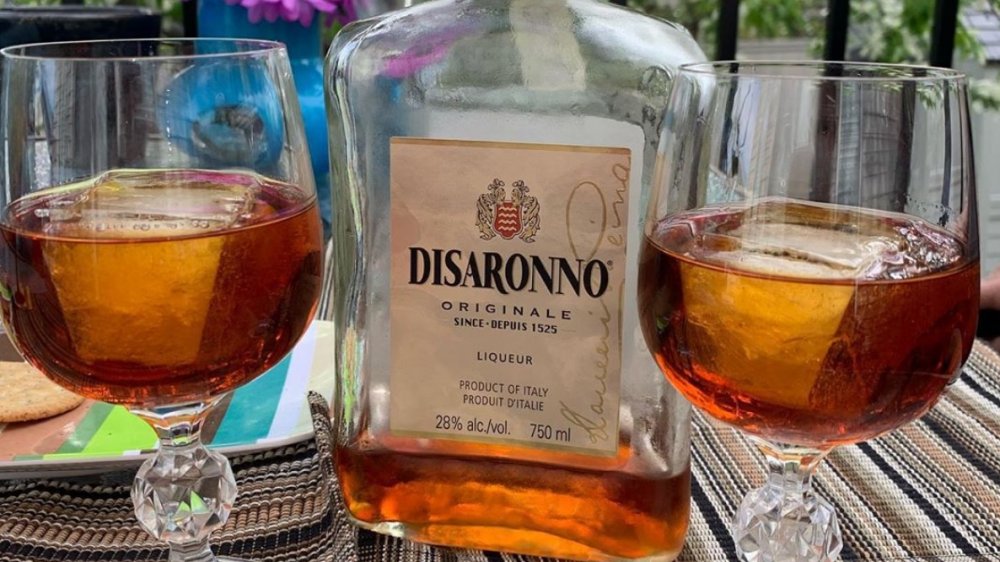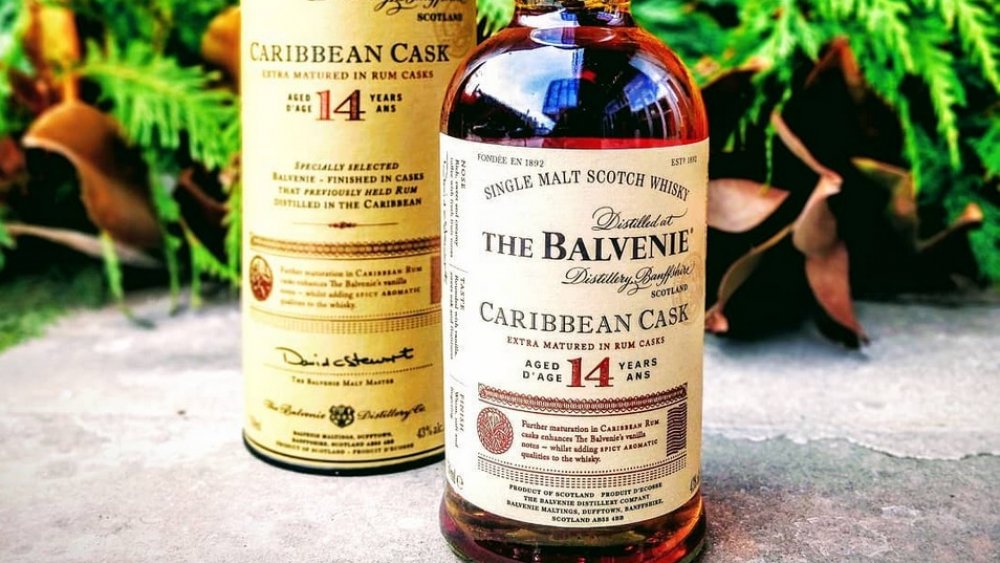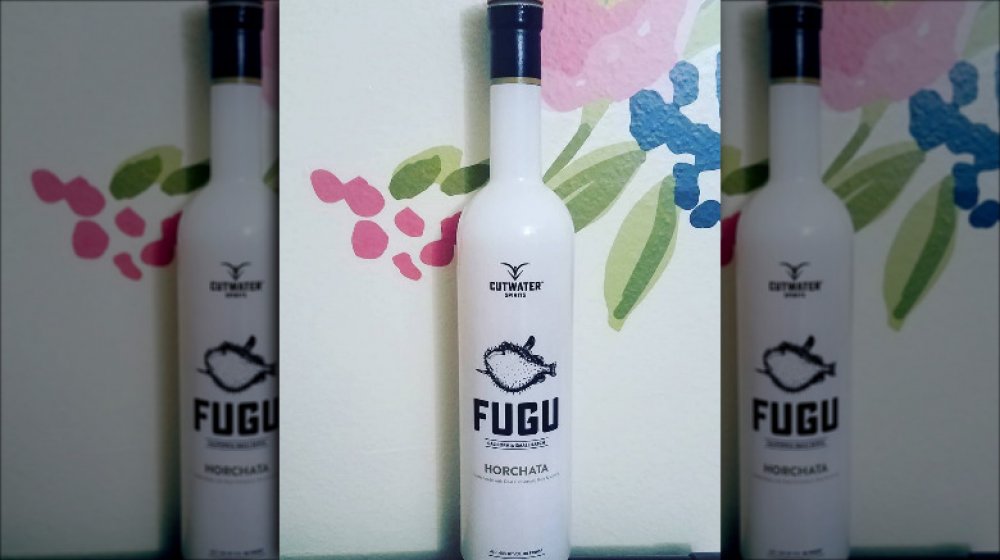Alcohols You Should Just Drink Straight
Staring at the shelves of a local liquor store can be an intimidating experience — whether it's picking out the perfect birthday gift for a liquor connoisseur, or expanding an alcohol repertoire previously reliant on whatever cheap liquor shaped your college experience. Knowing what brands serve up the smoothest, most enjoyable whiskey, rums and more is an important punch in your "achievements of adulthood" card.
But adding booze to mixers and cocktails is all too easy. Masking the antiseptic taste of low-quality vodka with juice, or chasing harsh tequila with a squeeze of sour fruit and salt, doesn't necessarily heighten your drinking experience. It's time to put the cocktail shaker down, and up your alcohol-served-neat game.
Choosing a high-quality alcohol means mixers are no longer needed — so you can put down the fruit punch-flavored drinks and start drinking like a grown up. These are the alcohols that are so good, you can actually drink them straight.
Crown Royal XR Whiskey
The extra-rare whiskey of the Crown Royal family, this alcohol was literally made for royalty. It surfaced in 1939 as a welcoming agent for the royal visit of King George VI and Queen Elizabeth, the first ever reigning monarchs to visit Canada (so you know it had to be a big deal to create). The product is considered such an extravagant whiskey that Houston Astros second baseman Jose Altuve gifted each of his teammates a bottle after they won the 2017 World Series.
According to their website, the flavor is "rich and complex" and leaves a "long, peppery and warm" finish. Such a fine whiskey is clearly best when served neat; adding it to a glass of coke would be royally screwing over your drinking experience.
The exquisite taste comes at a price however; a bottle will set you back at least $130. Margarett Waterbury of The Whiskey Wash says it's totally worth it, though. "If you're ready to splurge, go ahead and pick up an XR. It's a satisfying luxury experience and the stuff tastes just like you'd hope; a deeper, more resonant version of the easy-drinking Crown Royal you know and love."
Becherovka
Becherovka is the best when it comes to bitter liquors from the Czech Republic. The color is golden, the consistency slightly syrupy. The flavor is harsh, but ends up smooth, leaving drinkers with a Christmasy aftertaste. It's easy to shoot, but sipping it works just as well. Many in the Czech Republic also swear by its medicinal qualities (apparently, a swig a day keeps the doctor away).
The herbal liquor is certainly an acquired taste. At first mention, some may wince at the idea of drinking Becherovka straight. Because of its intensity, it's often considered an exotic alternative to traditional bitters. Becherovka cocktails are swiftly appearing on trendy bar menus around the world, but hardcore drinkers (especially Czechs, who drink more beer per capita than any other country) don't seem to mind it straight up. While it certainly enhances a cocktail or mixer, there's something impressive in being a person who can handle their Bechy.
Reyka Vodka
You wouldn't sip on rubbing alcohol — so why would you buy Vodka that tastes like it? Luckily Reyka vodka exists in this world, a small-batch vodka distilled in a country that uses its surrounding nature to create a quality product not entirely out of reach for consumers, price-wise. This incredibly smooth vodka from Iceland barely leaves a burn in the back of your throat. The flavor and sensation is similar to a clean, crisp sip of water — that packs a punch at the end and of course gets you tipsy.
Icelandic water is so pure that drinking its tap water is highly encouraged. And since "water sourced from an arctic spring that runs through a 4,000-year old lava field" is an integral part of the distilling process, it's easy to appreciate the association. If that wasn't enough of a reason to try it straight, the vodka is also filtered through lava rocks, and harnesses the country's naturally-occurring geothermal energy to produce each bottle. You don't have to travel to Iceland to get it, but it makes for a good excuse to drink under the Northern Lights: The best place to stock up on a stash is the duty-free shops at Keflavik International Airport. If you won't be in the area though, don't worry — there's a good chance you can pick it up at your local shop.
Four Roses Single Barrel Bourbon
Bourbon served neat is the preferred way to go for most bourbon drinkers, particularly those residing in Kentucky, where 95 percent of the world's bourbon is produced. In an article for Gear Patrol Magazine, chief operating officer at Four Roses Distillery John Rhea states: "When I drink bourbon, it's usually over ice, maybe two or three cubes...When you put bourbon over ice, and the cold interacts with the bourbon, the product will actually bloom."
Four Roses Single Barrel Bourbon is consistently victorious when it comes to bourbon accolades. Even at 100 proof and 50 percent alcohol by volume, the taste is incredibly smooth and mellow, with a lingering but pleasant finish. The high quality comes from the care that goes into every sip: According to an article on VinePair, the distillery uses "a single-story rack warehouse for the sake of temperature control and avoidance of product variation." The Four Roses website politely offers cocktail recipes for drinkers getting used to the brand, but notes that their Single Barrel Bourbon "has been carefully handcrafted to be enjoyed on its own."
Ron Zacapa 23 Rum
Not mixing rum into a cocktail seems out of place for some, but when you find a great rum like Zacapa 23, you understand why it's a sipping rum. Originating in Guatemala, it's a departure from Cuban and Puerto Rican rums, but that's part of why it stands out. This particular rum is blended using rums aged six to 23 years, crafted using the solera process, which consists of a series of intricately casked, blended, and re-casked processes. The result is a slightly sweet, buttery taste that can stand completely on its own.
"I consider Ron Zacapa 23 as one of the best sipping rums, which really changes how people thing about rum," says Spencer Spellman, owner of lifestyle website Whiskey Tango Globetrot. "It's rich, flavorful, smooth, and I'd never even consider adding to a cocktail. My recommendation: Pour an after-dinner glass neat and pair with a nice piece of dark chocolate."
Kings County Distillery Chocolate Whiskey
Speaking of chocolate, chocolate + whiskey sounds awesome, but few have managed to marry the two as well as Kings County Distillery has. Their product, which is produced completely in Brooklyn, combines their signature Moonshine "with ground cacao bean husks from Mast Brothers Chocolate." The result is a bittersweet taste with a warm finish that is surprisingly smooth and delightful.
According to Wendell Britt from The Whiskey Wash, "this flavoring doesn't just make the whiskey more approachable," it also "provides a more complex flavor." So while it's tempting to throw together a chocolate-based cocktail, you'd be doing the whiskey a disservice if that's your first introduction to the brand. It's a great drink to sip on when you're looking to relax after dinner; it's all of the reward that comes with a bar of chocolate, with a flavor that lingers longer than if you'd eaten an actual bar.
Del Maguey Chichicapa Mezcal
Taste a bit of smoke in your cocktail? It's likely to be mezcal, a Mexican alcohol that differs from tequila in the way it's distilled, where it's produced, and which kind of agave it uses. New York Times writer Eric Asimov named Del Maguey Chichicapa his number one pick after sampling several brands back in 2010, when mezcal was on the rise. While it's quickly gaining popularity in the United States and can be found in bars high and low, drinking it straight is an adventure on its own.
According to the Del Maguey website, Chichicapa, which is named for the village where it's made, contains "nose of sweet roasted agave and toasted corn, palate of dried fruit and sweet almond," and "finish of chocolate and mint." This mezcal is one instance where drinkers aren't blowing smoke when it comes to being satisfied — Emma Janzen from Serious Eats recommends Chichicapa for those intent on "savoring slowly and leisurely."
Plymouth Gin
If it's good enough for the Navy, it's good enough for your glass. A classic staple in the gin community, Plymouth Gin has been around since 1793, when it was originally produced by Dominican monks. The taste is fragrant and slightly bitter, the finish "elegant, long, fresh and aromatic." Sippers definitely experience a florally combination of seven different kinds of botanicals, including Juniper berries (which give it its signature gin taste), lemon peels, and coriander seed.
According to their website, "for almost 200 years, Her Majesty's Naval Fleet and Plymouth Navy Strength were inseparable, with no ship leaving port without a bottle on board." That's a big commitment, but it's a clear choice based on quality. At least you don't have to be part of a fleet to enjoy it; the age-old standards of this gin makes it one of the easiest to drink straight. Try it neat to understand its complexities before grabbing that bottle of tonic.
Qui Platinum Extra-Añejo Clear Tequila
Shante Cosme of Complex magazine writes, "A fine tequila does not require you to lap up a rim's worth of Morton's salt for it to be palpable, nor does it need to be saturated with a sea of sugar-laden sour mix." And when it comes to the world's first platinum extra-añejo tequila, drinking it neat is definitely the norm. Qui has created an exemplary product; it's so special that the typical amber color is removed after being "filtered nine times after the aging process, then distilled a third time" according to Jason Fine in an article for Men's Journal.
It's part of why, when you're drinking it, there's no overbearing alcohol smell or harsh burn (aka "raspa"). It's a tequila that's meant to be enjoyed over a long period of time, like when you're watching the sun go down in Mexico, not rushing to suck on a lime after some sloppy shots at a bachelorette party. After savoring a sip or two, you'll understand why it puts the QUI in tequila.
Green Spot Irish Whiskey
In a world where most people consider Guinness to be their Irish drink of choice, Jameson has done an incredible job of making drinkers rethink what Irish whiskey really means. What sets Green Spot apart however, is that it's part of the single pot still (something that only happens in Ireland). According to Richard Thomas of Paste Magazine, what makes single pot still so unique is that it "comes from a single distillery, is made in a pot still and with barley...whereas single malts are made from 100 percent malted barley, single pot still whiskey is made with both malted and unmalted (green) barley."
Its brother, Yellow Spot, is a higher-end whiskey that delivers an incredible drinking experience, but Green Spot is definitely an affordable alternative packing a nice punch. It results in a "creamy mouthfeel" after delighting drinkers with hints of cinnamon, vanilla, and brown sugar sensations. In this way, it's best left as-is and as far from the ginger ale bottle as possible.
Dewazakura Oka Ginjo
Sake will either make or break a drinker, but one thing is for sure — this is an alcohol that should rarely, if ever, be mixed. Sure, sake cocktails exist, but why dilute a flavor that's been in around for over 2,000 years? With all the variations sake has to offer, it's easy enough to find one that fits your tastes.
A clear winner however is Dewazakura Oka Ginjo, a sake brewed in a city called Tendo (of the Yamagata prefecture). It's relatively new to foreign markets, its rarity partially responsible for the "Ginjo Boom," with the popularity of Oka Ginjo leading the way. According to their website, Oka Ginjo is a lighter sake, best served cold, neither too sweet nor too dry. It's best when paired with fish, especially sushi, as it adds a simple floral taste and is light enough so as not to detract from your meal.
Aperol
If you're unfamiliar with this Italian liqueur, you're probably not alone. It's not exactly a household staple, but you'll spy it on the shelf at most bars and liquor stores around the other apéritifs — liqueurs designed to wake up the digestive system and stimulate your appetite before a meal. Recently, bars serving up craft cocktails have turned to Aperol as a mixer, using it in cocktails like the Paper Plane made with equal parts bourbon, Aperol, Amaro Nonino, and fresh lemon juice. It's also popular as part of the refreshing Aperol spritz (Aperol and prosecco), but we wondered if it would stand up as a solo sipper.
It turns out it's a fantastic option. On their website, Aperol describes the flavor as "zesty orange with complex herbal scents harmonized with a touch of vanilla," and it finishes with a pleasant herbaceous bitterness. It doesn't hurt that this liqueur boasts a surprisingly low alcohol content, clocking in at only 11 percent. That means the bitter-sweet flavor of the orange and herbs can come through without being stifled by a harsh alcohol finish. Sounds perfect for waking up your palate before a big meal or sipping on the porch during a hot summer day.
Five Farms Irish Cream
Irish cream doesn't exactly have a reputation that would inspire you to drink it on the rocks. It's most commonly used to celebrate St. Patrick's Day, booze up your coffee, or turn a White Russian into a mudslide and a martini into a chocolatini. While most people think of Bailey's when it comes to Irish cream, there's a better option — especially if you're drinking it on the rocks.
Five Farms Irish Cream is made in County Cork, Ireland, and the company describes it as a "true farm-to-table product." Each bottle is made from a single batch of fresh cream sourced from five local, family-run farms. The cream is then mixed with real Irish whiskey, creating a concoction that earned the highest scoring Irish cream liqueur in history — 97 points at the 2018 Ultimate Spirits Challenge. The judges described it as having flavors of "coffee with fresh cream, dulce de leche, coconut, maple, and Belgian waffles." Drink it after dinner instead of dessert, and you might just find yourself an Irish cream on the rocks convert.
Disaronno Originale
Remember that oddly sensual Disaronno commercial where a woman ordered Disaronno on the rocks and her entire group ended up sucking on the ice cubes (presumably, because it tasted so great)? Well, the commercial might have been annoying, but the concept behind it is solid. This almond-flavored amaretto liqueur is rich and sweet, and it goes down easy. Most bartenders use it to make drinks like the amaretto sour, combine it with scotch for the Godfather drink, or serve it over ice cream. Our favorite way to enjoy it? On the rocks as a sipper after dinner treat — either with dessert or as a dessert replacement.
What makes Disaronno's amaretto so much tastier than other brands? Well, it's hard to say exactly. They've closely guarded the secret family recipe since the 1500s, but we do know that it doesn't actually contain almonds. The American Academy of Allergy Asthma & Immunology confirms that Disaronno Originale is nut-free, made with apricot kernel oil and 17 herbs and fruits. Something about that complex combination creates a smooth, unforgettable experience, so sip away without the need for a mixer.
Balvenie Caribbean Cask
Scotch isn't for everyone, but aficionados know it's best to drink it without any mixers. Aging the strong liquor in casks or barrels for a minimum of three years — or as long as 50 years — deepens its flavor and mellows out any harsh alcohol tones, making it smooth and sippable. Some scotch (especially those from Islay) contain heavy smoked flavors because of their use of peat, but Balvenie is in a different class of scotch. It's not smoky at all, and their aging process makes it an excellent intro sipper for rum lovers.
Balvenie normally ages their single-malt whisky in oak casks for 14 years to give it a smooth finish and a honeyed flavor. For their Caribbean Cask, they take an extra step, finishing the aged scotch in rum barrels. That infuses it with "notes of toffee and a hint of fruit, with a warm, lingering finish," creating An easy-drinking, super sippable scotch. After a few sips, you may wonder why you've always preferred whisky and bourbon to scotch.
Cutwater Fugu Horchata Vodka
Horchata is definitely one of those Mexican foods you have to try before you die: The beverage is wildly popular in Latin America. It's traditionally made by soaking and pureeing nuts and seeds — usually rice and almonds, although some recipes use barley or sesame seeds. Each recipe is different, but the creamy liquid is usually infused with sugar, cinnamon, vanilla, and other spices, creating a sweet, soothing drink that can tame the heat of the hottest chili pepper.
Cutwater Spirits took things to the next level when they infused the flavor of horchata into vodka, creating a higher-proof version of our favorite drink. It could certainly be used instead of regular vodka to make a spicier White Russian, and they even recommend mixing it with coffee stout to create a nuanced beer cocktail. But, after we tried this bold vodka, we couldn't help but ask for it on the rocks. It has enough flavor to stand on its own, so why not just drink it straight?
